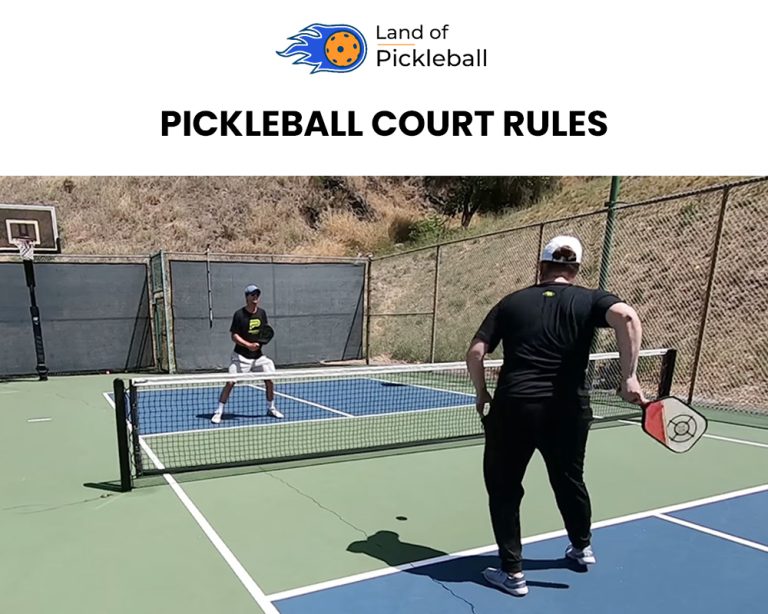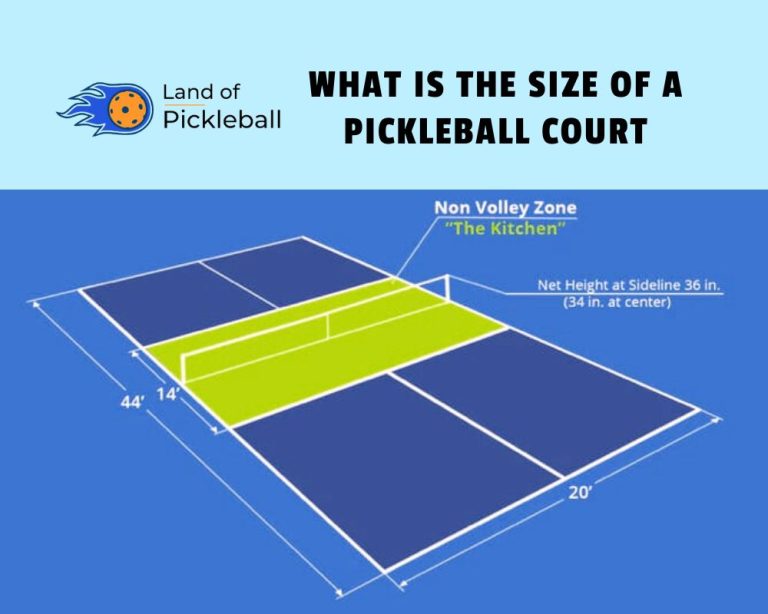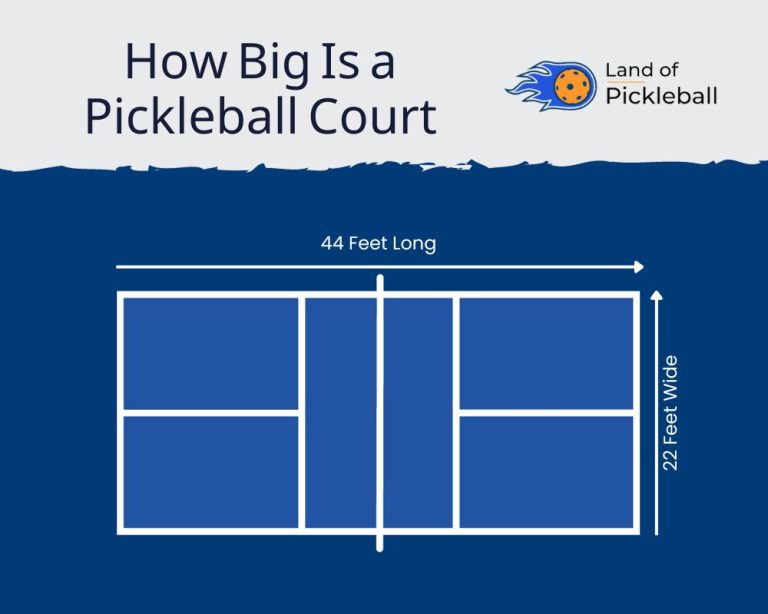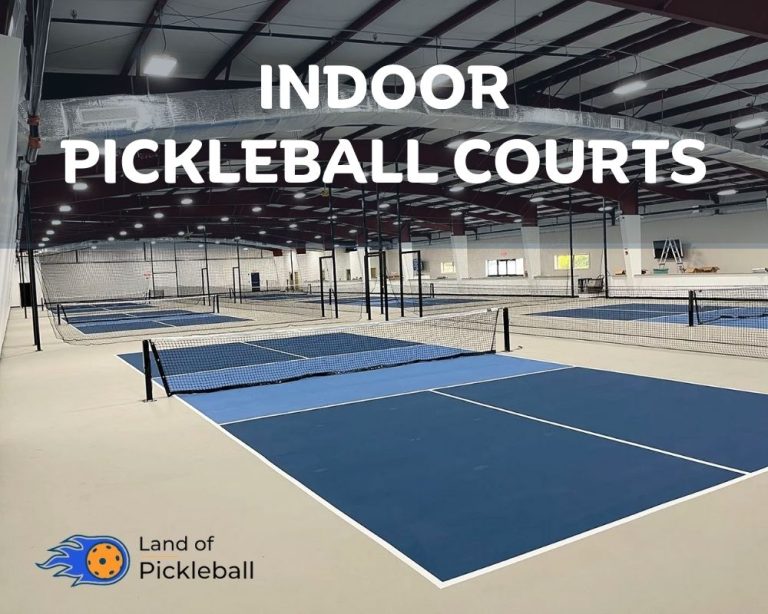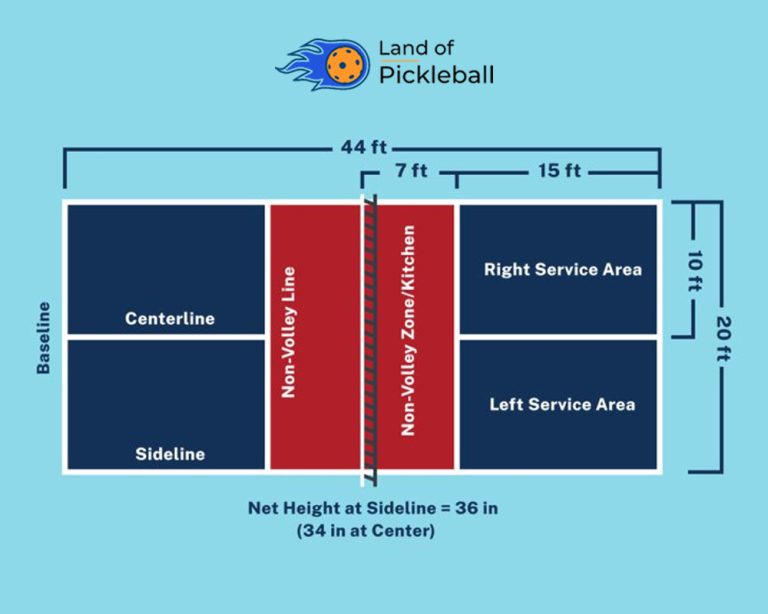Comprehensive Guide on Pickleball Court Layout in 2024
Know about pickleball court layouts, dimensions, and construction guidelines from our worthy information. You feel free to draw on the Tennis court also.
Pickleball court is usually superimposed over existing sports courts. You’ve reached the right corner if you’re a beginner and want to know about pickleball court layout. We’re offering an in-depth view of pickleball dimensions, layout, and design, that eases you to understand the great aspects of pickleball court.
Though pickleball originated from other racquet sports. One configuration is to utilize your tennis sport’s existing court and use the net as the center. Your pickleball court layout is ready for you on the tennis court. Meanwhile, you can prepare your next layout on the same tennis court. Hence, its net is installed for creating each pickleball court.
Get a Glimpse: Dimensions of a Pickleball Court
Pickleball Sport
Pickleball is an exciting and fast-growing sport in the United States, and it’s becoming popular worldwide. It’s played with a solid paddle, a plastic ball with holes, on a rectangular court.
The sport started for fun in 1965 when two American dads invented it. It quickly became captivating, and the first official tournament happened in 1976. Since then, the sport has been thriving. Hence, drawing or making a pickleball court layout is not hard for new players, especially if they get inspiration from other racquet sports. You can have your own court using asphalt or concrete with a non-slip acrylic surface.
Moreover, the advanced floating pickleball court carries a creative twist to traditional layouts. This new aspect brings the game to water-based settings. You can explore various pickleball court layouts that suit your desired environment.
3 Vital Parts of Pickleball Court Layout
NVZ: It includes the area from the kitchen line to the net. You may call it a non-volley zone, the kitchen or no volley zone. (its name represents that players have to avoid volleying their balls into this region)
Service Area: There are two halves of this area; the left half (behind the NVZ line) is referred to as the left service area. The right half (behind the NVZ line) is the right service area. These halves are 10 feet by 15 feet.
Pickleball lines: these are centerlines, baselines, and sidelines. These lines are drawn to divide the Pickleball court into three major parts. Meanwhile, the net can segregate the halves horizontally and identically.
Basics of Pickleball Court Layout
To develop expertise in the gameplay, it’s essential to have a good understanding of the Pickleball court layout. The standard pickleball court is 20 feet wide and 44 feet long, slightly smaller than a doubles tennis court. However, the tennis court can be modified to fit smaller spaces for pickleball and accommodate its play.
Pickleball Court Markings
Pickleball court comprises different areas, and each region serves a specific purpose. Hence, you can mark the court lines and exhibit the defined boundaries with vibrant playing zones.
The most crucial components of the Pickleball court layout are:
Hence, knowing detailed information about these regions’ markings is key to comprehending the pickleball court layout. Because of its rules knowledge, pickleball players are proficient in maintaining their permanent or temporary pickleball court.
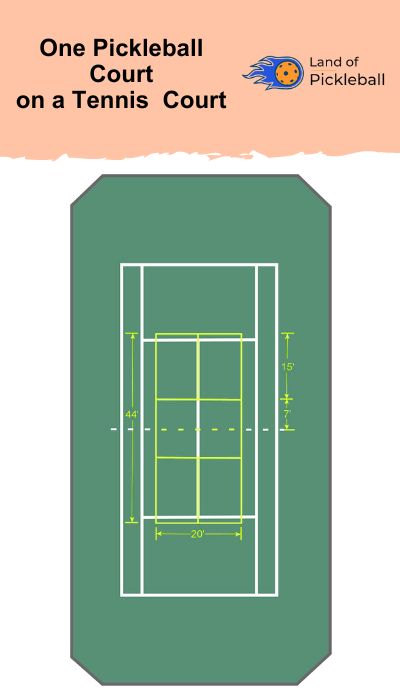
Put the tennis net at 34 inches in the middle. Draw a pickleball court line on the court. Now, your court can be used for both tennis and pickleball easily.

If the corners are angled, two courts can fit well. For temporary conversion, use USAPA Portable Net Stands for pickleball. Keep the tennis net as a backstop for the two pickleball courts if you still want to play tennis.
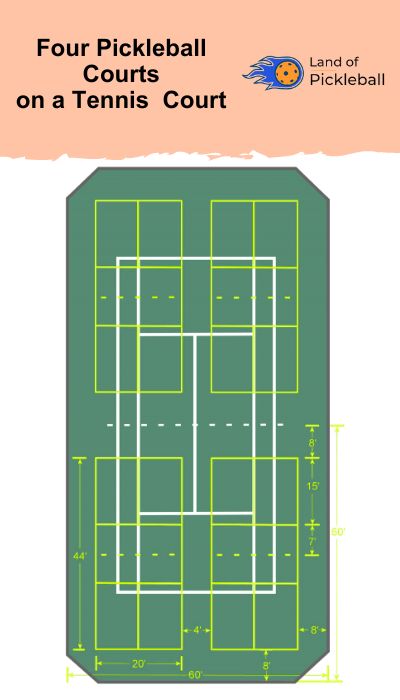
The pickleball courts moved two feet to fit the angled tennis court corners, leaving a tight 6 feet between the pickleball baseline and tennis net. This compromise is okay, especially if the tennis court is temporary while building permanent pickleball courts. Lines are aligned with tennis court lines to reduce confusion for players.
Officially Recommended Pickleball Court Layout
The first thing to think about when making a new sports court is space. Before, you start building, decide where your court will be.
Like a badminton court, the actual size is ’20 feet by 44 feet’ for a Pickleball court. While making the court, you must know that the entire court’s sideline net height must be 36 inches and 34 inches at the center.
A Pickleball court is created by marking or stripping the right & left service court regions. Then mark the kitchen region forefront to the net. However, you can design your desired pickleball court, while you may convert other courts into a pickleball court.
Thus, various courts are arranged in the North-South position and some in East-West. The north-south position usually prevents the players from the sun. You may set the court lines as:
So, for each pickleball court you want to make, you’ll need a space that’s 2176 square feet in total.
Most of the court will meet you in blue or green with white marking lines. You can utilize any prominent contrast color that must be visible on the court surface.
Pickleball Playing Area
Although there are 6 playing regions on each pickleball court-three on each side of the net and six on both, these are:
The standard service region is 10 feet wide and 15 feet long.
Materials Selection for Pickleball Court Surface
For a new pickleball court, it’s best to use asphalt or concrete. These materials make a flat and strong surface, so the ball bounces consistently. Furthermore, they need less maintenance if built well. Remember that tennis courts are also created with similar materials. You can also apply the slip-free surface to cover the playing region of the court. This slip-free surface can be created by silica sand.
Outdoor Pickleball Courts: Concrete and asphalt are both suited for outdoor courts (Reference)
Indoor Pickleball Courts: Designed with polyurethane material
The court surface coating is what covers the concrete or asphalt to make the playing area. The top choice is a 100% acrylic coating. The USAPA recommends this because it lets some air through and allows vapor to pass. If you’re making a temporary court on existing concrete or asphalt, you can use Mateflex snap-together tiles to create the courts easily.
When setting up outdoor pickleball courts, it’s important to have good lighting, especially for evening or night matches. This helps players see the ball well and react quickly. We find that LED lights are often used because they are bright and energy-efficient. Meanwhile, you must think about other things like nearby facilities, barriers to block the wind, structures for shade, and making sure players are comfortable.
Furthermore, each type has its pros and cons, like how long it lasts, how much care it needs, and how comfortable it is for players. Choosing the right surface, whether it’s for a short time or a long time, is crucial for making sure everyone has a good time playing.
Learn Here: Pickleball Court Lights
Temporary Pickleball Court Layout
Pickleball court layout access is convenient for both, whether you are an advanced player or a beginner. So, you are capable of possessing the permanent/dedicated pickleball court or shared pickleball court.
The dedicated courts are ideal; they may not always be available or feasible. Whereas shared layouts for pickleball court dimensions always come into play. What is the exact difference between these two courts:
| The higher upfront investment for dedicated court installation | Shared Method | Dedicated Method |
|---|---|---|
| Longevity and Durability | Temporary setup with potential wear and tear | Permanent court lines and fixtures for extended use |
| Flexibility and Portability | Utilizes existing spaces such as tennis or basketball courts | Requires a dedicated area for pickleball court installation |
| Cost Considerations | Relatively lower cost due to shared resources | Higher upfront investment for dedicated court installation |
| Maintenance Requirements | Minimal maintenance required | Regular maintenance for court lines and removable fixtures |
| Ease of Setup and Take Down | Quick and simple setup | Requires more time and effort for installation and removal |
Shared method
Pickleball courts are created by repurposing existing spaces such as tennis or basketball courts. This approach offers flexibility and portability as you can utilize different locations and set up the Pickleball temporary court lines. However, the shared method is cost-effective since it relies on shared resources and does not require a dedicated area.
Dedicated method
It involves preparing a specific area solely for pickleball court installation. This method requires more planning and investment as you must designate a space and install permanent court lines. The dedicated method offers the advantage of longevity and durability, as the court lines and fixtures are designed for extended use.
Strategies for Constructing the Pickleball Court Layout
Pickleball players must understand the cautious components of execution for drawing the court. These can be:
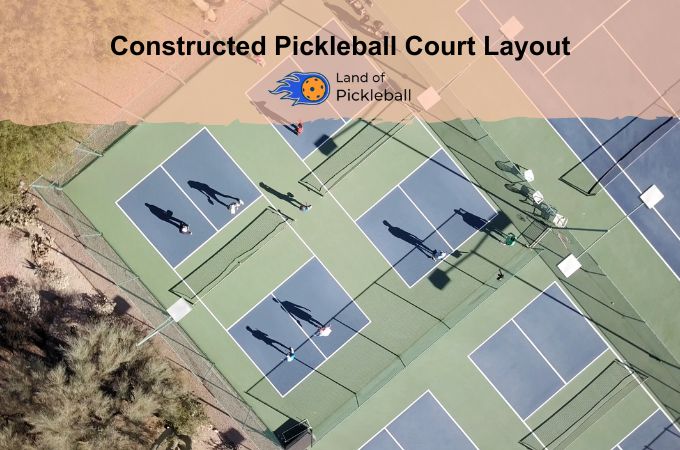
You can also consider other relevant components. Next, select a professional contractor with a thorough grip on pickleball standards.
Final verdict
Making the Pickleball Court Layout is important to have a fun tournament. If you know the right size, marks, and equipment, you can make a court that’s fair and good for playing. Meanwhile, you also need to think about what players like, the space you have, and your budget when you draw the court. Taking care of it regularly helps keep the court good for a long time.


